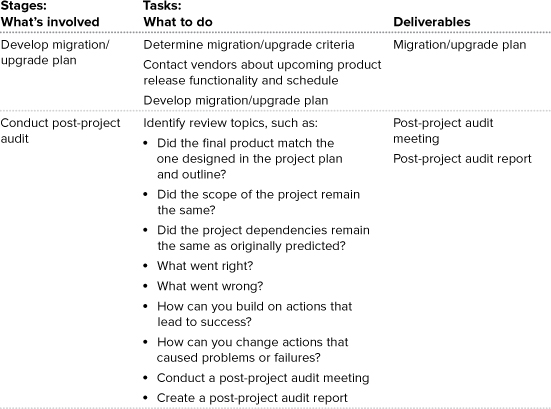Appendix. Checklist for implementing a unified content strategy
This appendix provides a checklist for implementing a unified content strategy supported by content management:
1. Analysis
2. Developing a unified content strategy
3. Selecting tools and technologies
4. Development
5. Testing and system modifications
6. Pilot
7. Implementation
8. Post implementation
Phase 1—Analysis
Starting with a thorough analysis is key to a successful unified content strategy. Thorough analysis ensures that your strategy addresses your organization’s specific needs and goals.
Table A.1 describes the stages of analysis.

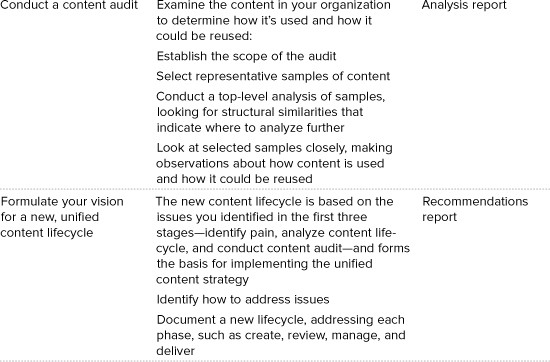
Phase 2—Developing a unified content strategy
Design is one of the most critical phases of implementing a unified content strategy. During the design phase, you figure out how you will address the issues you discovered during your analyses, and how you will realize your vision for a new content lifecycle. You design information models that specify how information will be used and reused; you define metadata to ensure that every component of content can be tracked, retrieved, and reused; you design personalized content to suit users’ unique needs; you design workflow to ensure that content moves through the content lifecycle; and you plan the change management processes (including security) you’ll need to help the changes take place.
Table A.2 describes the stages of developing a unified content strategy.
Table A.2. Developing a unified content strategy


Phase 3—Selecting tools and technologies
Evaluating and selecting tools is a large part of implementing a unified content strategy. There are so many types of tools available and you need to select ones that meet your organizations’ needs, your authors’ abilities, and what you’ve decided to do with your information (established during the design phase). Using everything you learned in the analysis and design phases—and referring to your new content lifecycle—evaluate tools and technologies.
Table A.3 describes the stages of selecting tools and technologies.
Table A.3. Selecting tools and technologies
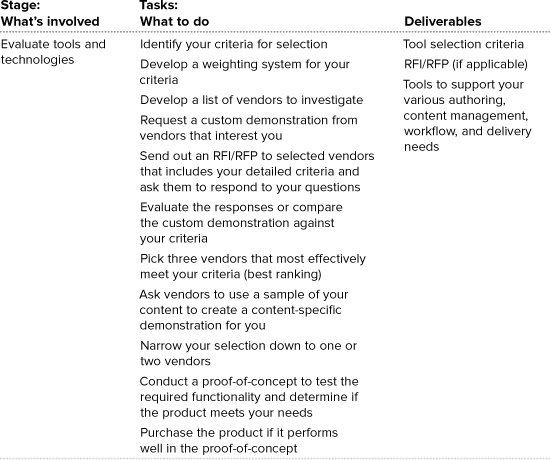
Phase 4—Development
Moving forward with your unified content strategy means changing the way you work. As you develop your proof-of-concept and pilot, you need to help your authors collaborate and provide them with guidelines and training on how to write and structure content in the same way, and you need to roll out your strategy throughout your organization. You also need to put together your change management plan, implement your models, and install and configure your software and hardware.
Table A.4 describes the stages of development.
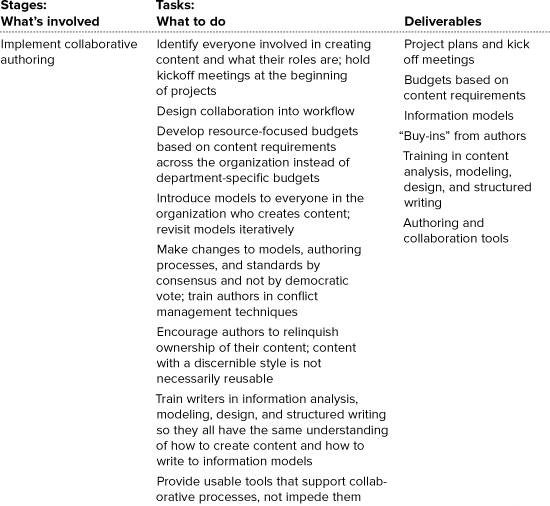

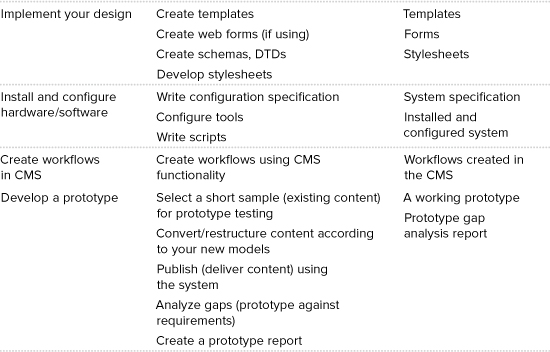
Phase 5—Testing and system modifications
During this phase of the project, you use your prototype to extensively test the functionality of the system, information models, business processes, and workflows. While many of these tasks are required for most project implementations, they are not specific to a unified content strategy and are not covered in this book.
Table A.5 describes the stages of testing and system modifications.
Table A.5. Testing and system modifications

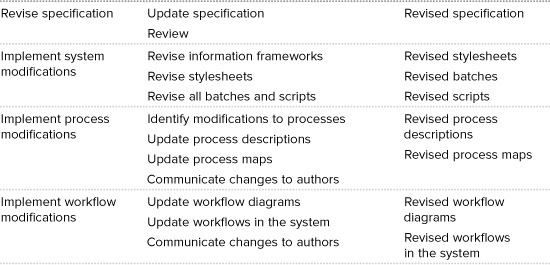
Phase 6—Pilot
A pilot is required to selectively roll out and test the new tools and processes in a controlled environment that will not impact key deliverables. To conduct a pilot, you select a group, department, or area you will use to roll out a scaled-down version of the unified content strategy so you can thoroughly test the processes and infrastructure. Once the pilot is complete, the rest of the process can be prioritized for implementation.
Table A.2 describes the stages of conducting a pilot.
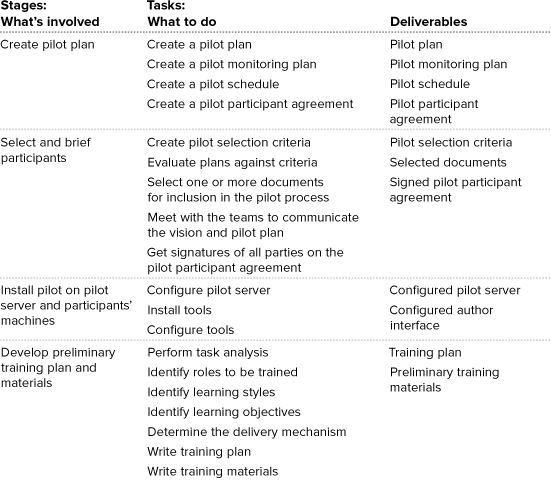
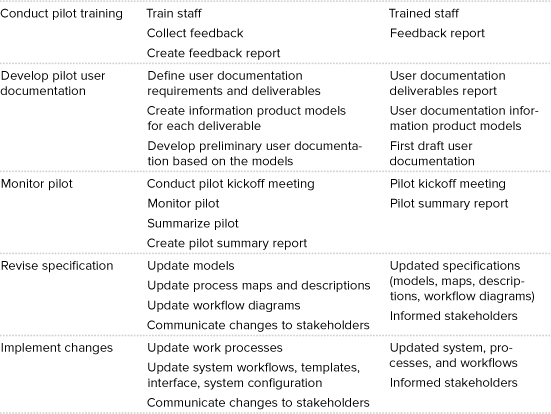
Phase 7—Implementation
Proper planning and training are essential to the successful implementation of your unified content strategy.
Table A.7 describes the stages of implementation.
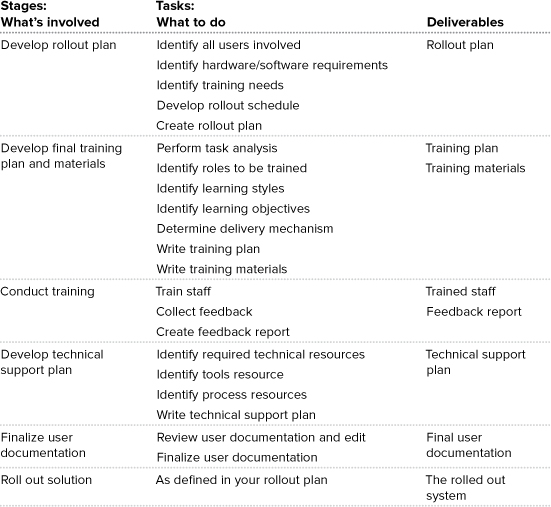
Phase 8—Post-implementation
Once your strategy has been successfully implemented, you need to ensure that it continues to run smoothly, and that you keep up-to-date on the latest technological advances. It is also important to analyze your recently completed unified content strategy to determine how you can leverage the experience for future projects.
Table A.8 describes the stages of post-implementation.
Table A.8. Post-implementation
